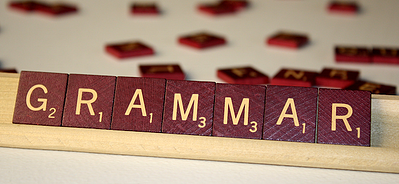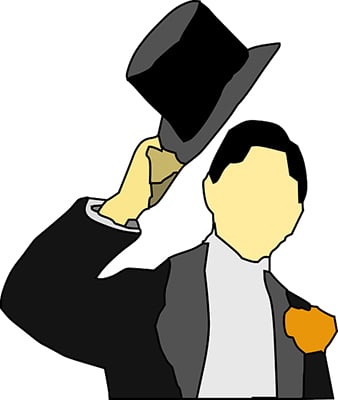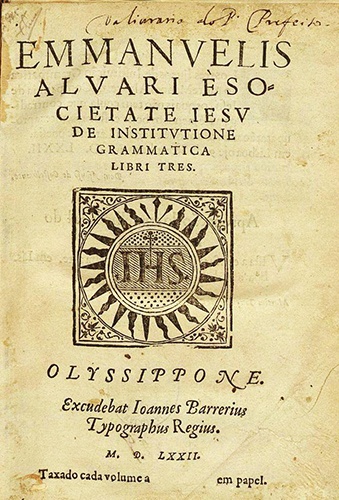The Complete Guide to SAT Grammar Rules

Even though the English language is complex, the SAT tests a specific set of grammar rules. Furthermore, it tests these rules the same way, over and over again.
In this complete guide, we’ve compiled a comprehensive list of SAT grammar rules you need to know to ace the SAT Writing and Language section. If you master all these rules and practice them with realistic questions, you’ll have a huge advantage on SAT Writing and Language.
Unlike other guides, ours focuses on providing you with lots of examples to help you understand how the grammar rule will show up on the SAT. After all, you need to master the SAT format to do well on the SAT!
Concision and Redundancy
There are times when saying something twice is needed: for emphasis, to review a difficult topic, or to explain something more clearly. The SAT, however, is all about being as succinct and to the point as possible.
Your ability to edit the fat out of sentences is tested in three ways: fixing overly wordy phrases, finding redundancies, and combining two simple sentences into a more complex one.
Overly Wordy Phrases
The SAT deeply believes in Shakespeare’s maxim that “brevity is the soul of wit”: if you can say the same thing with fewer words, do it.
It’s tempting to think that when a sentence uses a multi-word phrase where a single word will do, the sentence sounds formal or more academic. But this is not the case. Often, one word is better than many words (examples 1 and 2).
Sometimes, a sentence might use words that don’t serve any purpose and don’t even need to be replaced but rather deleted altogether (examples 3 and 4).
Examples
Error: Thinking in a manner more general, we can say that good schools enable people to learn more.
Fix: Generally, we can say that good schools enable people to learn more.
Error: The company might not be awarded the contract because it lacks production facilities, making it a worse choice from a theoretical way of speaking.
Fix: The company might not be awarded the contract because it lacks production facilities, making it a worse choice theoretically.
Error: Although hesitant to challenge herself at first, the student decided to enroll in three AP courses, two honors courses, and an intensive art course on top of that.
Fix: Although hesitant to challenge herself at first, the student decided to enroll in three AP courses, two honors courses, and an intensive art course.
Error: When the audience stood to applaud the speaker, it was clear that her words had had a marvelous, even stupendous, effect on the crowd.
Fix: When the audience stood to applaud the speaker, it was clear that her words had had a marvelous effect on the crowd.
Redundancy
If a sentence expresses the same bit of information two or more times, it’s considered redundant. Pick the best way of stating the necessary fact and delete the repetition.
Examples
Words or phrases that mean the same thing as each other are underlined.
Error: The stock market might repeat its drop and rise pattern again, warns the financial forecast.
Fix: The stock market might repeat its drop and rise pattern, warns the financial forecast.
Error: Soon a relative calm period followed quickly after the brunt of the cyclone had passed.
Fix: A relative calm period followed quickly after the brunt of the cyclone had passed.
Error: Management was surprised to see a biannual uptick in sales twice each year.
Fix: Management was surprised to see a biannual uptick in sales.
Combining Simple Sentences
Sometimes, in order to write with concision, you have to combine simple or related sentences into one. Don’t worry about keeping word order, as this kind of revision often requires you to shift things around.
To combine sentences correctly, ask yourself the following questions:
- Is there a person, place, thing, or concept that both sentences are talking about?
If so, you can make one sentence into a dependent clause of the other through the repeated noun (example 1).
- Is there a chronological sequence that the two sentences are describing?
Then you can make one into a dependent clause of the other using prepositions such as
before, after,
and
following
(example 2).
- Does one sentence define the other?
Combine them by inserting whatever is being defined into the defining sentence (example 3).
Examples
The nouns, chronology, or definitions used to combined the sentences are underlined.
Error: The voting rate has not decreased among uneducated citizens. Uneducated voters continue to vote for better schools.
Fix: The voting rate has not decreased among uneducated citizens, who continue to vote for better schools.
Error: Young musicians are encouraged to perfect their techniques and skills through their conservatory training. After this, they can start their careers in small, local orchestras.
Fix: After perfecting their techniques and skills through their conservatory training, young musicians can start their careers in small, local orchestras.
Error: The conclusion scientists came to is the idea that instead of being made up of particles, matter is actually made out of one-dimensional objects called strings. This is string theory.
Fix: The conclusion scientists came to is string theory, the idea that instead of being made up of particles, matter is actually made out of one-dimensional objects called strings.
 Redundancy: good for mountain climbing, bad for writing.
Redundancy: good for mountain climbing, bad for writing.
Idioms and Conventional Expressions
The SAT tests your knowledge of common English usage, including two types of idioms.
First, there are expressions that mean something different from the actual words being used (such as raining cats and dogs or kick the bucket). Secondly, there are short phrases or groups of words that always go together (such as stumble on or keep at bay).
You’ll also be asked to distinguish among frequently confused homonyms—that is, words that sound like each other but are used in different circumstances as they mean different things. One common example is bear vs bare.
Verbal Phrases
The SAT particularly loves one type of idiom called verbal phrases, which are verb + preposition pairs, and wants to check that you know for sure which preposition is correct.
Examples
Error: The show was followed on an encore.
Fix: The show was followed by an encore.
Error: She is responsible of returning her library books.
Fix: She is responsible for returning her library books.
Error: One should refrain for texting while driving.
Fix: One should refrain from texting while driving.
Prepositional Idioms
These are just like verbal phrases except they don’t involve verbs; rather, they’re groups of words that always end on a specific preposition.
Examples
Error: The translucent sculpture used light as a means through connecting viewers standing across from each other.
Fix: The translucent sculpture used light as a means of connecting viewers standing across from each other.
Error: In accordance to these findings, future research will focus on analyzing the effect of facial expressions on mirror neurons.
Fix: In accordance with these findings, future research will focus on analyzing the effect of facial expressions on mirror neurons.
Commonly Confused Words
English has a lot of words that sound similar to each other but mean very different things. Here is a very incomplete list of examples of these words (you can find more by searching for “commonly confused words” on Google):
Accept: to receive (verb)
Except: with the exclusion of (preposition)
Affect: to influence (verb); emotional response (noun)
Effect: result (noun); to cause (verb)
Beside: close to; next to
Besides: except for; in addition to
Complement: something that completes (noun); to pair well with (verb)
Compliment: praise, flattery (noun)
Eminent: prominent
Imminent: about to happen
Precede: to come before
Proceed: to continue, to keep going
Sight: scene, view, picture, being able to see
Site: place, location; a web page
Cite: to quote, to point to evidence
Then: an adverb denoting time
Than: a conjunction used in comparisons
Examples
Error: After losing his hearing, Beethoven had to rely on his imagination to hear his music, rather then listening to musicians perform it.
Fix: After losing his hearing, Beethoven had to rely on his imagination to hear his music, rather than listening to musicians perform it.
Error: Despite hours of work, the web administration team was unable to restore the sight after the denial of service attack.
Fix: Despite hours of work, the web administration team was unable to restore the site after the denial of service attack.
Error: The presidential candidate used rhetorical flourishes to great affect in his speech and received a standing ovation.
Fix: The presidential candidate used rhetorical flourishes to great effect in his speech and received a standing ovation.
Language Formality
When writing for school, work, or publication in a news or scientific journal, you have to use formal English. This means you need to avoid slang and words and phrases that sound too casual. It’s important to keep each sentence at the same language elevation.
Examples
Error: A bunch of guys doing experiments was able to synthesize a lithium-ion battery smaller than a grain of sand.
Fix: A team of researchers was able to synthesize a lithium-ion battery smaller than a grain of sand.
Error: In 1559, at London’s Westminster Abbey, Elizabeth Tudor, the 25-year-old daughter of Henry VIII and Anne Boleyn, got to become Queen Elizabeth I.
Fix: In 1559, at London’s Westminster Abbey, Elizabeth Tudor, the 25-year-old daughter of Henry VIII and Anne Boleyn, was crowned Queen Elizabeth I.
 Inappropriate informality won’t get you into the duke’s exclusive club either.
Inappropriate informality won’t get you into the duke’s exclusive club either.
Conjunctions and Conjunctive Adverbs
Conjunctions and conjunctive adverbs are words that explain how two clauses in a sentence, or how to two or more successive sentences, relate to one another.
The SAT checks your ability to use conjunctions and conjunctive adverbs to clarify cause and effect or logic within sentences.
Explanation
Some conjunctions link events in a cause-and-effect relationship to point out what happened as a result of something else. Here are some examples of these words, along with their meanings:
Because: what has just been said is true as a consequence of what is about to be said
Therefore and hence: it follows from what has just been said that
For example and for instance: here is evidence that backs up the previous argument
Whereby: by which; using the idea/principle/concept just mentioned; by means of
Consequently: directly following the thing that has just been described
Examples
The incorrect conjunctions are in bold, while the correct ones are underlined.
Error: Recent advances in medicine include a new MRI technique for detecting heart damage in chemotherapy patients. However, doctors will be able to see heart defects earlier and more effectively.
Fix: Recent advances in medicine include a new MRI technique for detecting heart damage in chemotherapy patients. Consequently, doctors will be able to see heart defects earlier and more effectively.
(Doctors can see better as a result of the new MRI test.)
Error: Not only have archaeologists in Britain unearthed several well-preserved Bronze Age dwellings, we are getting new insight into domestic life 3,000 years ago.
Fix: Because archaeologists in Britain have unearthed several well-preserved Bronze Age dwellings, we are getting new insight into domestic life 3,000 years ago.
(We are getting insight as a result of dwellings being unearthed.)
Error: Foreshadowing, a literary technique when an author hints at what will happen later in the text, is a useful tool for setting the right atmosphere.
Fix: Foreshadowing, a literary technique whereby an author hints at what will happen later in the text, is a useful tool for setting the right atmosphere.
(An author hints by means of foreshadowing.)
Contradiction or Digression
Other conjunctions can be useful for describing a negative or opposing relationship between events. These words can explain that something happened despite something else, or even though common sense would have not predicted it. They can also indicate that the argument is shifting to a different point.
However: introduces a statement/idea that contradicts what has just been said
On the one hand, on the other hand: presents two ideas that oppose each other (these always go together)
But: despite what has just been said, here is information to the contrary
Nevertheless: in spite of what has just been said
Aside from: the example that follows is an exception to what is being discussed
While and whereas: in contrast or comparison with the fact that
Examples
The incorrect conjunctions are in bold, while the correct ones are underlined.
Error: The pianist had not had nearly enough time to study and practice the sonata, and she played it flawlessly.
Fix: The pianist had not had nearly enough time to study and practice the sonata, but she played it flawlessly.
(The flawlessness happened despite the lack of practice time.)
Error: Just as crayons are a medium generally reserved for young children, professional artists have used them to great effect.
Fix: Though crayons are a medium generally reserved for young children, professional artists have used them to great effect.
(That professional artists have used crayons contrasts with the fact that crayons are usually for children.)
Similarity and Emphasis
The final category of conjunctive adverbs connects things that are equal or similar, or adds examples that emphasize the direction of the argument.
Moreover: as an additional—potentially more convincing or important—matter
Just as: in comparison to; similar to
Likewise: in the same way; also
Not only, but also: presents two ideas that support and emphasize each other (these always go together)
Examples
The incorrect conjunctions are in bold, while the right ones are underlined.
Error: Investing money is one way to plan for the future. Hence, another good long-term planning option is to take advantage of a retirement savings account.
Fix: Investing money is one way to plan for your future. Likewise, another good long-term planning option is to take advantage of a retirement savings account.
(The word “another” means that two similar things are being discussed.)
Error: Dressing to attract attention can affect the way people perceive you. Nevertheless, it can be inappropriate depending on the context.
Fix: Dressing to attract attention can affect the way people perceive you. Moreover, it can be inappropriate depending on the context.
(The inappropriateness is an additional, more significant effect of attention-getting clothing.)
 Honestly, this is in no way connected to conjunctive adverbs. However, look—cute!
Honestly, this is in no way connected to conjunctive adverbs. However, look—cute!
Punctuation
There are many punctuation rules in English, but, fortunately, the SAT doesn’t test all of them. Instead, the test focuses on several specific types.
Punctuating Modifiers
Phrases that modify or describe a part of a sentence are punctuated differently depending on whether they are an essential or nonessential part of the sentence.
If the sentence needs the modifier in order to make sense, the modifier is restrictive and doesn’t get surrounded by commas. If you can easily take out the modifier without losing the sentence’s meaning, the modifier is nonrestrictive and should be surrounded by commas like this:
- Put one comma right
after
a modifier that starts a sentence.
- Put one comma right
before
a modifier that ends a sentence.
- If the modifier appears in the middle of the sentence,
surround it
with commas on both sides.
Examples
Incorrect and correct punctuation are underlined.
Error: US President, Barack Obama, will meet with his counterparts from the European countries for the multinational summit.
Fix: US President Barack Obama will meet with his counterparts from the European countries for the multinational summit.
(Since “Barack Obama” is key to the sentence’s meaning, no commas are needed.)
Error: The daisy, a perennial plant, sometimes known as bruisewort, grows low to the ground.
Fix: The daisy, a perennial plant sometimes known as bruisewort, grows low to the ground.
(The modifier just needs to be surrounded by commas and doesn’t need any commas inside it.)
Error: Started on a whim by an eccentric resident; the project to clean up the abandoned lot soon became a popular neighborhood pastime.
Fix: Started on a whim by an eccentric resident, the project to clean up the abandoned lot soon became a popular neighborhood pastime.
(The modifier should be set off by a comma, not a semicolon.)
Error: This last part of the minuet should be played with steadily increasing volume, or crescendo; until the final chord.
Fix: This last part of the minuet should be played with steadily increasing volume, or crescendo, until the final chord.
(“Crescendo” is being defined, so it needs to be set off by commas, not semicolons.)
Using Dashes
Think of dashes as being kind of like parentheses. Dashes separate out a sentence piece that is explanatory but not crucial, like an aside or something muttered under your breath. Sometimes this piece is a digressive thought; sometimes it’s a list of examples.
Typically, the phrase inside the dashes has commas in it, so dashes are the best way to set it off from the rest of the sentence. If the phrase is in the middle of the sentence, it must be surrounded by dashes on both sides.
Examples
Incorrect and correct punctuation are underlined.
Error: The hairstylist picked up the scissors—the kind that usually sit in the jar of blue liquid, and started to snip bits of hair off his client’s head.
Fix: The hairstylist picked up the scissors—the kind that usually sit in the jar of blue liquid—and started to snip bits of hair off his client’s head.
Error: The best hotel concierges have many skills: knowledge of foreign customs, the ability to speak several languages, and a charming manner, that put even the most diffident guests at ease.
Fix: The best hotel concierges have many skills—knowledge of foreign customs, the ability to speak several languages, and a charming manner—that put even the most diffident guests at ease.
Error: After readers found the errors, all 243 of them—the publishing company was forced to issue a reprint of the book.
Fix: After readers found the errors—all 243 of them—the publishing company was forced to issue a reprint of the book.
Punctuating “Such As”
The phrase such as introduces a series of examples to back up a point that’s just been made. The correct way to punctuate it is to put a comma before such as, and then no comma before the first list item or example.
Examples
Incorrect and correct punctuation are underlined.
Error: Teachers give out a variety of homework assignments, such as, worksheets, hands-on projects, and online quizzes.
Fix: Teachers give out a variety of homework assignments, such as worksheets, hands-on projects, and online quizzes.
Error: The antique book shop also sold other paper ephemera such as, maps and newspapers.
Fix: The antique book shop also sold other paper ephemera, such as maps and newspapers.
Formatting Lists
A list is a series of people, ideas, objects, actions, or conditions that follow one another, play the same role in the sentence, and are typically separated by commas. In fact, that last sentence has two lists: “people, ideas, objects, actions, or conditions” and “follow one another, play the same role in the sentence, and are separated by commas.” See what I did there?
Punctuation rules for lists are as follows:
- They should be
separated by commas,
with a comma coming before the “and” or “or” that precedes the last list item:
dogs, cats, gerbils, and fish.
- If one of the list items has a comma within it, then all the list items should be
separated by semicolons instead:
shaggy, purebred dogs; white cats; soft, cuddly gerbils; and fish.
Examples
Incorrect and correct punctuation are underlined.
Error: The market stall sold ripe apples, cherries; and sometimes even apricots.
Fix: The market stall sold ripe apples, cherries, and sometimes even apricots.
Error: The class focused on programming languages, such as Python; algorithms; and documentation.
Fix: The class focused on programming languages, such as Python, algorithms, and documentation.
Using Colons
Colons are used in two different ways.
First, they can indicate that a list is coming up, and that after the list the sentence will end:
Here is my list of acceptable pets: dogs, cats, gerbils, and fish.
Second, they are used to indicate that an explanation, a definition, or an example of what has just been said is coming:
My search for the perfect pet came down to man’s best friend: a dog.
Examples
Incorrect and correct punctuation are underlined.
Error: It’s easy to explain why many 12th graders start taking school less seriously toward the end of the year; senioritis.
Fix: It’s easy to explain why many 12th graders start taking school less seriously toward the end of the year: senioritis.
(“Senioritis” is the defined term.)
Error: The more I cook at home, the more kitchen techniques I learn, knife skills, mise en place, and cooking several dishes simultaneously.
Fix: The more I cook at home, the more kitchen techniques I learn: knife skills, mise en place, and cooking several dishes simultaneously.
(“Learn” introduces a list.)
Error: Consider lobsters, for example, with age, they only get stronger and more fertile.
Fix: Consider lobsters, for example: with age, they only get stronger and more fertile.
(“Example” introduces an explanation.)
Using Semicolons
Semicolons have two basic functions.
First, in lists they separate items that have commas:
We ate mushrooms, which had been picked in a nearby forest; herbs, nuts, and berries foraged from a public park; and homegrown apples.
Second, they fix run-on sentences by separating two independent clauses without a conjunction:
Jim rode his bike; Mary walked.
Examples
Incorrect and correct punctuation are underlined.
Error: The State Department completed three assignments: diplomatic talks, led by an expert in arms control, a bilateral meeting, chaired by an assistant director, and a state visit.
Fix: The State Department completed three assignments: diplomatic talks, led by an expert in arms control; a bilateral meeting, chaired by an assistant director; and a state visit.
(Two of the three list items have commas in them, so they are separated by semicolons.)
Error: The architect worked on the model all night, he was bleary-eyed during the presentation.
Fix: The architect worked on the model all night; he was bleary-eyed during the presentation.
(These are independent clauses, so they should be connected by a semicolon.)
 Semicolon, meet semi-cake.
Semicolon, meet semi-cake.
Sentences
Sentences are made up of groups of words that are called clauses. There are two types of clauses: independent and dependent.
An independent clause can function as a complete sentence because it has a subject-verb pair and does not start with a word or phrase that makes the clause dependent, such as when or because.
Meanwhile, a dependent clause must be attached to an independent clause to be part of a complete sentence.
The SAT tests three different types of clause-related situations: fixing sentence fragments, splitting up run-on sentences, and using a dependent clause as the subject of a sentence.
Sentence Fragments
A sentence fragment is a sentence made of anything less than an independent clause. To fix it, we either connect the fragment to an independent clause (examples 1 and 2), or add the missing subject or verb (example 3).
Examples
In these sentences, subjects are underlined and verbs are in bold.
Error: To boost the number of women in STEM fields, including electrical, chemical, and industrial engineering.
Fix: To boost the number of women in STEM fields, including electrical, chemical, and industrial engineering, senior female executives also act as mentors to young women.
Error: From diving hard for every attempted shot to deftly throwing the ball to the most open defender.
Fix: From diving hard for every attempted shot to deftly throwing the ball to the most open defender, the goalie was saving her team at a time when they needed her.
Error: For the sake of a better experience at school, asking his adviser for a new room assignment.
Fix: For the sake of a better experience at school, the freshman asked his adviser for a new room assignment.
Run-on Sentences
A run-on sentence is made of multiple independent clauses joined by only a comma or no punctuation at all. To find the correct answer on the SAT, look for an answer choice that uses one of these three fixes:
- If one independent clause is an explanation or definition of the other, add a word such as
because
or
which
to the beginning of the explanation (examples 1 and 2).
- If neither independent clause defines or explains the other, combine them with either a comma + conjunction (such as and
or
but),
or
with a semicolon (examples 3 and 4).
- Alternately, split them up into two separate sentences (example 5).
Examples
The separation between the two independent clauses is marked with |, while the correction is underlined.
Error: The dog Mary wants to put in the dog show is a beagle, | it is a medium-sized member of the hound family.
Fix: The dog Mary wants to put in the dog show is a beagle, which is a medium-sized member of the hound family.
Error: The deli had no milk left after a rush of morning customers, | the owner rushed to order more.
Fix: Because the deli had no milk left after a rush of morning customers, the owner rushed to order more.
Error: My favorite Mediterranean spread is hummus it is very garlicky.
Fix: My favorite Mediterranean spread is hummus, as it is very garlicky.
Error: Air plants like the Tillandsia species are tolerant of a wide range of climates, | they thrive in room temperatures.
Fix: Air plants like the Tillandsia species are tolerant of a wide range of climates; they thrive in room temperatures.
Error: Deciding which play to put on is only the first step, | even a great script won’t succeed without a well-selected cast and a set design that works with the director’s vision.
Fix: Deciding which play to put on is only the first step. Even a great script won’t succeed without a well-selected cast and a set design that works with the director’s vision.
Dependent Clauses as Sentence Subjects
Sometimes, instead of having a simple noun for a subject, a sentence can use a whole dependent clause as a subject. When this happens, treat the dependent clause as a singular noun.
For instance, in the first example, the clause whoever came up with the idea to put solar panels on rooftops is the subject of the sentence. You can tell by using this trick: replace the clause with a singular noun, such as Albert Einstein, to see whether the sentence still works.
When we do this here, we can see that Albert Einstein are geniuses doesn’t work; therefore, the verb needs to be singular to match the subject.
Examples
The subordinate clause that is the subject is underlined, while the verb it’s doing is bold.
Error: Whoever came up with the idea to put solar panels on rooftops are geniuses.
Fix: Whoever came up with the idea to put solar panels on rooftops is a genius.
Error: That cleaning a kitchen is a repetitive chore which makes it especially thankless.
Fix: That cleaning a kitchen is a repetitive chore makes it especially thankless.
 Does his over-reliance on your milk and cookies make him a dependent Claus?
Does his over-reliance on your milk and cookies make him a dependent Claus?
Faulty Modifiers
A modifier is a word or phrase that describes (i.e., modifies) something. There are two kinds of modifier problems tested on the SAT: dangling modifiers and misplaced modifiers.
Dangling Modifiers
A dangling modifier is a descriptive phrase that begins a sentence, has a comma after it, and has the noun it describes not placed right after the comma.
In the first example below, the modifier coating the sidewalk is supposed to describe the snow. However, since we is the first word after the comma, the sentence makes it sound like we are the ones coating the sidewalk.
Examples
Modifiers are underlined, while the nouns being correctly and incorrectly modified are in bold.
Error: Coating the sidewalk, we trudged through the heavy snow.
Fix: We trudged through the heavy snow coating the sidewalk.
Error: Long and tangled, it was difficult to comb the child’s hair.
Fix: Long and tangled, the child’s hair was difficult to comb.
Error: Exhausted and weak, the soldiers’ uniforms were covered in frost.
Fix: Exhausted and weak, the soldiers were covered in frost.
Misplaced Modifiers
A misplaced modifier is a descriptive phrase that’s not close enough to the thing it’s supposed to be describing, making it sound like it’s referring to the wrong thing.
In the first example below, the modifier on the sale rack is supposed to show where the jacket is hanging. However, since it’s been placed next to too small, the sentence seems to say that it’s the way the jacket was hanging that is too small (instead of the jacket itself). To correct it, we move the modifier closer to the noun it describes.
Examples
Modifiers are underlined, while the things being correctly and incorrectly modified are in bold.
Error: The jacket was too small on the sale rack.
Fix: The jacket on the sale rack was too small.
Error: Ray wore his one-collared shirt to the job interview, which was stained with mustard.
Fix: Ray wore his one–collared shirt, which was stained with mustard, to the job interview.
Error: She handed out brownies to children wrapped in foil.
Fix: She handed out brownies wrapped in foil to children.
 There I was, just dangling in the breeze like a modifier …
There I was, just dangling in the breeze like a modifier …
Parallel Construction
To use parallel construction is to write a list in which all the items have the same grammatical format. For example, if two things in a list are verbs ending in -ing, the third item should also be a verb ending in -ing. If one item in a list is a prepositional phrase, then the second item should also be a prepositional phrase.
Examples
Words or phrases that are already parallel are in bold, whereas those that need to be corrected to parallel are underlined.
Error: The couple bought the concert tickets, arrived at the theater, and they sat down in their seats.
Fix: The couple bought the concert tickets, arrived at the theater, and sat down in their seats.
Error: Painting your bedroom requires picking a color, measuring the walls, get the right tools, and buying paint.
Fix: Painting your bedroom requires picking a color, measuring the walls, getting the right tools, and buying paint.
Error: The workshop had a whiteboard on one wall, a set of shelves against another wall, and a third wall had many drawers for tools.
Fix: The workshop had a whiteboard on one wall, a set of shelves against another wall, and many drawers for tools along a third wall.
Error: Her essay focused on characters’ reactions to bad news and showing how these characters handled success.
Fix: Her essay focused on characters’ reactions to bad news and showed how these characters handled success.
 Set up parallel tracks so your sentence train can roll safely on its way.
Set up parallel tracks so your sentence train can roll safely on its way.
Plurals and Possessives
The SAT will test your understanding of how to make nouns plural (when there is two or more of something) and how to make them possessive (when you have to explain that something belongs to something or someone else).
To make a plural noun that doesn’t own anything, add s to the end of a singular noun:
one student, but three students
To make a possessive singular noun, add apostrophe + s to the end of a singular noun:
the pencil that belongs to one student = the student’s pencil
To make a possessive plural noun, add an apostrophe to the end of a plural noun:
the classroom that belongs to three students = the students’ classroom
Examples
Error: Every morning, many hawk’s circled the field, looking for prey.
Fix: Every morning, many hawks circled the field, looking for prey.
Error: The more I read the novel, the closer I felt to the authors’ point of view.
Fix: The more I read the novel, the closer I felt to the author’s point of view.
Error: Art Deco furniture is marked by the artists use of geometric shapes, curves, strong colors, and new materials, such as plastics.
Fix: Art Deco furniture is marked by the artist’s use of geometric shapes, curves, strong colors, and new materials, such as plastics.
 That man and that jacket belong to that dog—they are that dog’s belongings.
That man and that jacket belong to that dog—they are that dog’s belongings.
Pronouns
A pronoun is a part of speech stands in for a noun. For example, the pronoun she can stand in for the woman or Queen Elizabeth. But unlike nouns, pronouns change their form if they’re used in different ways. These are the ways that pronouns are tested on the SAT.
Subject vs Object Pronouns
Nouns and pronouns can be either the subjects or the objects of verbs. Subjects do verbs and objects have verbs done to them. For instance, in the sentence, “A dog chases its tail,” dog is the subject noun, chases is the verb that it’s doing, and tail is the object noun.
Unlike nouns such as dog or tail, pronouns change form depending on whether they’re subjects or objects. For example, in the phrase she likes him, the woman is the subject, so the pronoun is she. On the other hand, in the phrase he likes her, the woman is the object, so the pronoun changes to her.
Subject Pronouns
Object Pronouns
I
me
you
you
he
him
she
her
it
it
we
us
they
them
If you’re trying to figure out whether to use a subject or object pronoun when dealing with a compound noun, one trick is to take out the other noun and try the sentence with just the pronoun—you’ll quickly know which is right. In the first example below, me ate dinner is clearly wrong. In the third example as well, sold cookies to I is obviously incorrect.
Examples
Error: Me and my parents ate dinner.
Fix: My parents and I ate dinner.
Error: The tourists asked my friends and I for directions.
Fix: The tourists asked my friends and me for directions.
Error: The Girl Scouts sold cookies to my sister and I.
Fix: The Girl Scouts sold cookies to my sister and me.
Who vs Whom
Who is a relative pronoun which can start either a dependent or independent clause within a sentence. Who is used when the pronoun is the subject doing the action, whereas whom is used when the pronoun is the object of the action.
What’s tricky about who is that figuring out whether to use its subject or object form doesn’t depend on its antecedent. Instead, you have to see what role who is playing inside its own clause.
For instance, in example 1, even though people is an object of the verb benefits, inside the clause who understand the tax code, who is the subject of the verb understand. On the other hand, in example 2, even though skydivers is the subject of the sentence, in the clause whom many people greatly admire, whom is the object of the verb admire.
One trick is to replace the who or whom with I or me to see whether you need the subject or object form. In this case, me understand the tax code doesn’t work, and neither does many people greatly admire I.
Examples
Subjects are bold, verbs are in italics, and objects are underlined.
Error: The essay points out that the reduction in taxes only benefits those people whom understand the tax code.
Fix: The essay points out that the reduction in taxes only benefits those people who understand the tax code.
Error: Skydivers, who many people greatly admire, tend to be comfortable with risk-taking and in excellent physical shape.
Fix: Skydivers, whom many people greatly admire, tend to be comfortable with risk-taking and in excellent physical shape.
Pronouns and Antecedents
If there is a pronoun, it should be obvious what noun the pronoun is referring back to. If it’s unclear which noun a pronoun is referring to, or if a pronoun has no antecedent, the sentence needs to be rewritten in one of two ways: either the pronoun can be replaced with a noun, or the phrase can be simplified.
For instance, in example 1, this could refer either to Industrial Revolution, resistance group, mechanization, or labor force, so a noun is added. Meanwhile, in example 3, there is no antecedent for them, so the sentence has to be rewritten.
Examples
The unclear pronouns are in bold, while corrected pronouns and antecedents are underlined.
Error: During the Industrial Revolution in England, a resistance group sprang up to protest the mechanization of the labor force. Workers associated with this began to break and burn factory machinery to protest what they saw as unfair treatment.
Fix: During the Industrial Revolution in England, a resistance group sprang up to protest the mechanization of the labor force. Workers associated with this faction began to break and burn factory machinery to protest what they saw as unfair treatment.
Error: The files arranged by the temporary workers were out of order, so management sent them back to the main office.
Fix: The files arranged by the temporary workers were out of order, so management sent the files back to the main office.
Error: The amount of entertainment available is increasing steadily; soon there will be more than 5,000 shows for them to distribute to subscribers.
Fix: The amount of entertainment available is increasing steadily; soon there will be more than 5,000 shows for distribution to subscribers.
Pronoun and Antecedent Agreement
Pronouns have to match their antecedents in various ways.
This means that when we use pronouns more than once in a sentence, we have to use the same person throughout. (To clarify: 1st person means I or we, 2nd person means you, and 3rd person means he, she, it, or they.)
This also means that plural nouns are matched with plural pronouns, and singular pronouns refer back to singular nouns.
Examples
Mismatched pronouns and antecedents are in bold, while matching pronouns and antecedents are underlined.
Error: If a person wants to succeed in corporate life, you have to know the rules of the game.
Fix: If a person wants to succeed in corporate life, she has to know the rules of the game.
Error: Like its distant oceanic relatives whales, hippopotamuses can alter their density to sink or float in water.
Fix: Like their distant oceanic relatives whales, hippopotamuses can alter their density to sink or float in water.
Error: After acquiring several new companies, the multinational corporation moved their headquarters to a state with more favorable tax loop holes.
Fix: After acquiring several new companies, the multinational corporation moved its headquarters to a state with more favorable tax loop holes.
That vs Who
The basic concept behind these relative pronouns is simple: who is the pronoun for a person or people, and that is the pronoun for everything else.
Examples
Mismatched relative pronouns are in bold, while matching pronouns and antecedents are underlined.
Error: Coaching can be difficult for people that have a hard time planning strategy on the field.
Fix: Coaching can be difficult for people who have a hard time planning strategy on the field.
Error: The scientific establishment who rejected Giordano Bruno’s theory that the earth revolves around the sun later had to acknowledge its mistake.
Fix: The scientific establishment that rejected Giordano Bruno’s theory that the earth revolves around the sun later had to acknowledge its mistake.
Error: The decision was made by the director, wanting to organize the group in a more efficient way.
Fix: The decision was made by the director, who wanted to organize the group in a more efficient way.
Indefinite Pronouns
Indefinite pronouns refer to a person, place, or thing that is unknown or unspecified. Many indefinite pronouns that seem like they’re referring to multiple things or people are actually singular.
This means that they use singular forms of verbs: everyone is instead of everyone are (examples 1 and 2). This also means that any nouns that refer to them also have to be singular and not plural: no one wants to be a dropout instead of no one wants to be dropouts (examples 3 and 4).
Person
Place
Thing
everyone
everybody
everywhere
everything
someone
somebody
somewhere
something
anyone
anybody
anywhere
anything
no one
nobody
nowhere
nothing
each (of these)
either (of these)
neither (of these)
Examples
Pronouns and matching verbs or nouns are underlined, while mismatched verbs or nouns are in bold.
Error: On big-budget movies, each of the actors have large, well-decorated trailers.
Fix: On big-budget movies, each of the actors has a large, well-decorated trailer.
Error: Every one of the experts invited to speak at the conference were unable to make it.
Fix: Every one of the experts invited to speak at the conference was unable to make it.
Error: Anyone thinking about becoming writers must be excellent readers.
Fix: Anyone thinking about becoming a writer must be an excellent reader.
Error: Either of these desks would be great surfaces to work on.
Fix: Either of these desks would be a great surface to work on.
Its/It’s, Their/They’re/There, Your/You’re, Whose/Who’s
The different forms and abbreviations of these pronouns are frequently mixed up, but they’re something you simply have to memorize. Here are some tricks to use if you’re stuck:
- Take the abbreviation apart: does it is, you are, they are, or who is work in the sentence? Then use it’s, you’re, they’re, or who’s.
- If the sentence is trying to say that something belongs to something else, use its, your, their, or whose.
- If the sentence is trying to point to a specific or vague place, use there.
Pronoun
Definition
Examples
its
belonging to it
the puppy’s toy = its toy
the leg of the table = its leg
it’s
it is
the sky is cloudy = it is cloudy = it’s cloudy
the book is long = it is long = it’s long
their
belonging to them
the sisters’ bedroom = their bedroom
the color of walls = their color
they’re
they are
flowers are blooming = they are blooming = they’re blooming
friends are great = they are great = they’re great
there
in/on that place
existing somewhere
in the world exist many trees = there are many trees
the pants are on the shelf = the pants are there
your
belonging to you
this is my dinner, and this is your dinner
you’re
you are
you are delighted = you’re delighted
you are a student = you’re a student
whose
belonging to whom?
I don’t know who owns this house = whose is this house?
who’s
who is
who from the team is coming? = who’s coming?
Examples
Incorrect forms of these words are underlined, while the correct ones are bold.
Error: Who could have known that Da Vinci’s most mysterious painting would become his most famous, with it’s unique half-smile forever expressing some unknowable emotion.
Fix: Who could have known that Da Vinci’s most mysterious painting would become his most famous, with its unique half-smile forever expressing some unknowable emotion.
Error: Your just like all the other Americans visiting England who think that cricket is closely related to baseball.
Fix: You’re just like all the other Americans visiting England who think that cricket is closely related to baseball.
Error: Having several books to return to the library, Maria checks they’re due dates to make sure she won’t have to pay any fines.
Fix: Having several books to return to the library, Maria checks their due dates to make sure she won’t have to pay any fines.
Error: Dismayed that no one agreed with his argument, the city councilman asked, “Whose with me on this?”
Fix: Dismayed that no one agreed with his argument, the city councilman asked, “Who’s with me on this?”
Error: Every study we have come across suggests that bicycles are an excellent way to get around: there economical, good for public health, and environmentally friendly.
Fix: Every study we have come across suggests that bicycles are an excellent way to get around: they’re economical, good for public health, and environmentally friendly.
 Feeling overwhelmed by grammar is apparently part of the human condition. Here’s a grammar book from 1526. Just imagine all those monks having to study pronouns in Latin …
Feeling overwhelmed by grammar is apparently part of the human condition. Here’s a grammar book from 1526. Just imagine all those monks having to study pronouns in Latin …
Verbs
There are two main issues with verbs tested on the SAT: verb tenses and subject-verb agreement.
Verb Tense
There are nine basic verb tenses, three for each time period (present, past, future). Below are the basic tenses formed from the verb to sing. As you can see, some of the verb tenses are created by adding forms of the verbs have, be, and do.
Time Period
Verb Forms
Present
Simple Present: They sing.
Present Continuous: They are singing.
Present Perfect: They have sung.
Past
Simple Past: They sang.
Past Continuous: They were singing.
Past Perfect: They had sung.
Future
Future: They will sing.
Future Continuous: They will be singing.
Future Perfect: They will have sung.
Generally, the idea is to keep verbs in a single sentence in the same time period, especially if a sentence is describing things that happen during the same time period (example 1).
If a sentence contains a shift in chronological time, verb tenses should shift to account for the change in time (example 3).
Examples
Verbs in the same tense are underlined, while verbs in the wrong tense are in bold.
Error: According to the cardiologist, since the patient’s arteries are (present) dangerously clogged with cholesterol deposits, the medical team had (past) to check for elevated blood pressure and other heart attack risks.
Fix: According to the cardiologist, since the patient’s arteries are (present) dangerously clogged with cholesterol deposits, the medical team has (present) to check for elevated blood pressure and other heart attack risks.
Error: Even though office hours had been (past) over for some time, the professor and her student are continuing (present) their productive work on the research project.
Fix: Even though office hours have been (present) over for some time, the professor and her student are continuing (present) their productive work on the research project.
Error: If the pace of technological advancements continues (present), in the future we ride (present) self-driving cars.
Fix: If the pace of technological advancements continues (present), in the future we will ride (future) self-driving cars.
Nouns and verbs are both parts of speech with numbers and are written differently if they refer to just one thing or multiple things. One dog runs fast, for example, but two dogs run fast.
Subject/verb agreement just means that the noun and verb have the same number (singular or plural). One point to remember is that collective nouns are singular (a “crowd of people laughs” instead of “crowd of people laugh”). A collective noun is a noun that stands for a group of things but is grammatically treated as a single unit (i.e., a singular noun).
Examples
Matching subjects and verbs are underlined, while verbs that don’t match subjects are in bold.
Error: A recent survey found that the furniture in most people’s homes are mostly made of wood.
Fix: A recent survey found that the furniture (singular) in most people’s homes is (singular) mostly made of wood.
Error: There is a beaker and three pipettes on the top shelf of the cupboard.
Corrected: There are (plural) a beaker and three pipettes (plural) on the top shelf of the cupboard.
Error: I am trying to read the name of the store across the street, but a crowd of people keep getting in the way.
Fix: I am trying to read the name of the store across the street, but a crowd (singular) of people keeps (singular) getting in the way.
 After a poorly verbed pitch, the batter verbed the ball to midfield. The shortstop verbed to the left, verbing the ball just in time to verb the runner out.
After a poorly verbed pitch, the batter verbed the ball to midfield. The shortstop verbed to the left, verbing the ball just in time to verb the runner out.
Illogical Comparisons
There are two different kinds of comparisons that break the rules of logic.
The first relies on the idea that you can only compare things that are alike in some way. One trick to spotting illogical comparisons is that they tend to happen when a sentence is comparing something that belongs to someone or something else by using the comparison word than. You have to make sure that the two things on either side of the than are in the same category (examples 1 and 2).
For instance, you can compare apples and oranges because both are fruits. But if both Stanley and Cora have apples, you can’t say the following:
I like Stanley’s apples better than Cora.
You’d have to say this:
I like Stanley’s apples better than Cora’s apples.
Or, more simply, this:
I like Stanley’s apples better than Cora’s.
The second kind of illogical comparison that the SAT likes to test is the notion that you can’t compare something to all things of that type. Instead, you can only compare that thing to all other things of that type (example 3).
Examples
The two things that each sentence is comparing are underlined.
Error: Some regulators believe that new drugs should have to go through an even more rigorous testing process than patients who prefer the one currently in place.
Fix: Some regulators believe that new drugs should have to go through an even more rigorous testing process than the one currently in place, which patients prefer.
Error: Charles Dickens’s epic novels, which are almost universally admired by readers and critics alike, are more sweeping than Jane Austen, who writes novels of manners.
Fix: Charles Dickens’s epic novels, which are almost universally admired by readers and critics alike, are more sweeping than Jane Austen’s novels of manners.
Error: For astronauts, the moon is easier to get to than any space object.
Fix: For astronauts, the moon is easier to get to than any other space object.
 You can compare the polar bear to the girls, but you can’t compare the polar bear’s favorite toy to the girls. Unless that is one extremely dangerous zoo.
You can compare the polar bear to the girls, but you can’t compare the polar bear’s favorite toy to the girls. Unless that is one extremely dangerous zoo.
The Bottom Line: All SAT Grammar Rules You Should Know
Here is a quick summary of all the SAT grammar rules we talked about in this article:
- Concision and Redundancy — the SAT is all about being as succinct as possible
- Overly Wordy Phrases — often, one word is better than many; sometimes, extra words should just be deleted
- Redundancy — if a sentence
expresses the same bit of information two or more times, delete the repetition
- Combining Simple Sentences — make one sentence into a dependent clause of the other through a repeated noun, using prepositions such as
before, after,
or
following,
or by inserting whatever is being defined into the defining sentence
- Idioms and Conventional Expressions
- Verbal Phrases — verb + preposition pairs that
always
go together
- Prepositional Idioms —
groups of words that
always
end on specific prepositions
- Commonly Confused Words — English has a lot of homonyms (words that sound similar to each other but mean very different things)
- Language Formality — avoiding slang and words/phrases that sound too casual
- Verbal Phrases — verb + preposition pairs that
- Conjunctions and Conjunctive Adverbs — words that explain how two clauses in a sentence or successive sentences relate to one another
- Explanation — conjunctions such as
because, consequently,
and
for example
link events in a cause-and-effect relationship
- Contradiction or Digression
— conjunctions such ashowever, but,
and
nevertheless
describe a negative or opposing relationship between events
- Similarity and Emphasis — conjunctions such as
moreover
and
likewise
connect things that are equal or similar, or add examples to an argument
- Explanation — conjunctions such as
- Punctuation
- Punctuating Modifiers — if the sentence needs a modifier in order to make sense, the modifier doesn’t need commas, but if you can take out the modifier without losing any meaning, the modifier should be surrounded by commas
- Using Dashes — separate out a word/phrase/clause that is explanatory but not crucial
- Punctuating “Such As” — put a comma before
such as (and no comma after it)
- Formatting Lists — list items are typically separated by commas, with a comma before the
and
or
or
that precedes the last list item
- Using Colons — indicates a list is coming up and that after the list the sentence will end; also used to introduce an explanation, definition, or example
- Using Semicolons — separates list items that have commas; fixes run-on sentences by separating two independent clauses without a conjunction
- Sentences — made up of independent and dependent clauses
- Sentence Fragments — sentences made of anything less than an independent clause
- Run-on Sentences — multiple independent clauses joined by only a comma or no punctuation at all
- Dependent Clauses as Subjects — if a sentence uses a whole dependent clause as a subject, treat the dependent clause as a singular noun
- Faulty Modifiers
—
words or phrases that describe something
- Dangling Modifier — a descriptive phrase that begins a sentence, has a comma after it, and has the noun it describes
not
placed right after the comma
- Misplaced Modifier — a descriptive phrase that’s not close enough to the thing it’s describing, making it sound like it’s referring to the wrong thing
- Dangling Modifier — a descriptive phrase that begins a sentence, has a comma after it, and has the noun it describes
- Parallel Construction — a list in which all the items have the same grammatical format
- Plurals and Possessives — plural is when there are two or more of something; possessive is when something belongs to something else
- Plural Noun — add s to the end of a singular noun
- Possessive Singular Noun — add apostrophe + s to the end of a singular noun
- Possessive Plural Noun — add an apostrophe to the end of a plural noun
- Pronouns — parts of speech that stand in for a noun (its antecedent)
- Subject vs Object Pronouns — pronouns change form depending on whether they’re subjects or objects in a sentence
- Who vs Whom — who is the subject form; whom is the object form
- Pronouns and Antecedents — it should be obvious which noun each pronoun is referring to
- Pronoun and Antecedent Agreement — pronouns have to match their antecedents’ person and number
- That vs Who — who is for a person or people; that is for everything else
- Indefinite Pronouns — pronouns such as everyone that seem plural but are actually singular
- Its/It’s, Their/They’re/There, Your/You’re, Whose/Who’s — you have to memorize these homonyms
- Verbs — the SAT tests tense agreement and subject-verb agreement
- Verb Tense — keep verbs in a single sentence within the same time period: present, past, or future
- Subject/Verb Agreement — a noun and its verb must have the same number (singular or plural)
- Illogical Comparisons — you can only compare things that are alike in some way, and you can’t compare something to all things of that type
What’s Next?
Knowing the grammar rules is just the beginning. Check out our complete guide to SAT Writing for a comprehensive take on all the topics and strategies you need to know for the SAT.
Excelling on SAT Writing also requires a lot of practice, so make sure you use our complete list of official and high-quality unofficial SAT practice tests in your prep.
Want an 800 on SAT Reading and Writing? First, get our comprehensive advice on how to study for the SAT. Then, read our detailed guides on how to get a perfect Writing score and how to get a perfect Reading score.
Want to improve your SAT score by 160 points?
Check out our best-in-class online SAT prep classes. We guarantee your money back if you don’t improve your SAT score by 160 points or more.
Our classes are entirely online, and they’re taught by SAT experts. If you liked this article, you’ll love our classes. Along with expert-led classes, you’ll get personalized homework with thousands of practice problems organized by individual skills so you learn most effectively. We’ll also give you a step-by-step, custom program to follow so you’ll never be confused about what to study next.
Try it risk-free today:
















![Toni Kroos là ai? [ sự thật về tiểu sử đầy đủ Toni Kroos ]](https://evbn.org/wp-content/uploads/New-Project-6635-1671934592.jpg)


